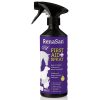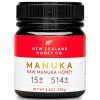In this week’s Vet Clinic, Kieran O’Brien MRCVS offers a first-aid refresher detailing the latest advice on wound treatment...
Horses usually sustain wounds from kicks or contact with fences, and treating horse wounds is something every owner should know how to do. A recent survey of 652 owners revealed that 40% of their horses had been injured in the preceding year, with nearly 90% of these injuries occurring out at grass.
Failure to spot a wound early or to recognise one that is potentially dangerous can affect both healing time and outcome, as can the use of inappropriate treatment from the start. Treating horse wounds correctly will promote fast and effective healing.
How does a wound heal
Within minutes of a wound occurring, the healing process begins. The first stage is the inflammatory phase, when blood clots in the wound. White blood cells migrate to it from surrounding tissues and blood vessels, releasing enzymes that “digest” damaged tissues and dead cells.
This phase lasts for a variable period and is prolonged by the presence of infection, trauma or foreign material. As inflammation is a key component of healing, suppressing it by administering anti-inflammatory drugs, such as phenylbutazone (commonly termed bute), may be ill-advised unless the horse is very lame.
The repair phase can only begin once the inflammatory phase is complete, typically within 12 hours of injury. Repair requires the formation of granulation tissue, a mixture of blood vessels, fibrous tissue-forming cells and other components, which expand to “bridge” the wound. This allows surface skin cells to migrate from the wound edges and over the granulation tissue.
During the final maturation stage, the tissue strengthens and contracts to reduce the overall size of the healed wound.
Various factors, such as excess movement, can interfere with healing. Failure to treat and clean a wound soon after injury, or to administer the full course of any antibiotics prescribed, may allow infection to develop or persist. Foreign material such as hair, soil, dead tissue or bone — even wound powder or spray — will also prevent healing.
Contrary to popular belief, a moist environment in the wound is best; studies have shown that “letting the air get to it” actually delays healing.
How to assess a horse’s wound
Wound assessment requires good light and the patient to be standing still, so a horse who is very distressed may first need veterinary sedation.
In many cases, injury assessment and decisions related to treating horse wounds are best left to a vet. As a rule, evaluation starts with the size and depth of the wound: those that penetrate the full thickness of the skin are particularly vulnerable to infection.
High-risk wounds include those close to important structures, such as a joint or tendon sheath; those involving damage to and exposure of underlying tissues, especially bone; wounds with large areas of skin loss; injury to the eye or head, and penetration of the chest or abdominal cavities.
Additional “red flags” include severe lameness, irrespective of the size of the wound, and evidence of a foreign body at the injury site or any discharge from it — particularly clear, yellow, viscous (thickened) fluid that could indicate joint penetration. Any of these signs require immediate veterinary treatment.
A kick wound is essentially caused by blunt trauma, so underneath an apparently small skin wound may be a much larger, bruised area that will act as a site for inflammation, swelling and bacterial multiplication. Kick wounds to the forearm or thigh regions typically become infected if not treated promptly, resulting in a swollen leg (cellulitis) and a lame horse within 48 hours.
While you wait for the vet to arrive, try to keep the horse quiet and still. Sweep any stable bedding aside if the wound is on a lower limb, or ideally stand the horse on a clean, hard surface.
The wound can be gently flushed clean with a hosepipe, but don’t use spray or powder before the vet has seen the injury. If the horse must be transported, for example, cover the cleaned wound with a sterile pad and cotton wool, followed by a support bandage.
A bleeding wound can be alarming, yet life-threatening haemorrhage is rare and only occurs if a major artery has been damaged. In most cases, bleeding ceases either spontaneously or when light pressure is applied for a short while.
Stem bleeding with a non-stick pad, such as Melolin, and a wad of cotton wool, holding this in place with a bandage or by hand if the wound is on the horse’s trunk. If blood seeps through, place another pad on top rather than removing the first.

Melolin, £6.39 at amazon.co.uk
This pack of 20 10x10cm dressings are individually wrapped and can be used for all sorts of minor injuries.
A tourniquet should only be used in very rare cases where the pressure pad technique fails, since severe limitation of blood flow to the limb may cause damage. Encircle the limb with a bandage, just above the wound, before inserting a pen or a twig under the bandage and twisting it until blood stops flowing. Release the tourniquet after a maximum of 10 minutes to check if bleeding has stopped, using it for the shortest period possible.
And remember the importance of clean hands and materials, to lessen the risk of wound contamination.

Disposable gloves at amazon.co.uk
Get a box of 100 and always have them to hand ready to deal with any injury.
Treating horse wounds: how to
A good rule of thumb is never to put anything into a wound you wouldn’t be willing to put into your own eye.
Many wound powders contain old-fashioned antiseptics that are a potential irritant, and most have an inert carrier powder that the horse’s system must eliminate from the wound before it will heal. Coloured aerosol sprays that contain antiseptics (or an antibiotic, if supplied by a vet) and water-soluble dye should be reserved for superficial grazes and not used if the full thickness of the skin has been breached.
The preferred topical treatment is hydrogel, a non-irritant, soluble gel. The gel keeps the wound moist and absorbs bacteria, damaged tissue and debris, and can be rinsed away and replaced at dressing changes.

Vetalintex, £7.32 at amazon.co.uk
This cleansing and sterile hydrogel encourages a moist wound condition to help aid recovery.
The recent appearance of bacteria resistant to common antibiotics has renewed interest in the ancient practice of using honey as a topical wound treatment. While many kinds of honey have antibacterial properties, manuka honey contains several additional elements that promote healing.
A unique manuka factor (UMF) score of 15+ is preferred for equine wounds. It’s worth investing in medical-grade manuka, from a chemist, as it’s thought that the pasteurisation of manuka honeys sold in supermarkets affects their properties. Applying manuka to bandaged wounds for more than 12 days can promote the growth of excess granulation tissue, known as proud flesh, but it can be used on unbandaged wounds for longer periods.
To dress a wound, apply a sterile pad then an absorbent layer, such as cotton wool, and a clean bandage. The size, firmness and thickness of the dressing is determined by the amount of discharge from the wound and the necessity to immobilise the skin edges or adjacent structures such as joints. Change the dressing daily in the early stages, according to the amount of discharge, reducing to every three to five days or as your vet advises.
Never use a poultice. This will delay healing, promote proud flesh and it has no role in equine wound management.
How to clean a horse’s wound
Wash your hands and be aware of the need for absolute cleanliness with equipment and technique.
Carefully clip away any overhanging hair from around the wound. Then using water and a very clean bowl, gently wash the surrounding skin with surgical scrub, such as Hibiscrub, and cotton wool. Any antiseptic you use should be very dilute.

Hibiscrub, £15 at amazon.co.uk
This antimicrobial and antibacterial skin cleanser helps to prevent infections by killing germs on the skin.
Flush the wound with saline solution or a hosepipe, working upwards from beneath the wound and only for as long as to leave it visibly clean. Rinse away any cleansing soap or antiseptic from the surrounding skin.
A final flush with sterile saline will restore the correct salt concentration in the depths of the wound.

Sterile saline eyewash, £4.99 at amazon.co.uk
This can also be used on wounds and is available in a range of bottle sizes.
You might also like:

Equine first-aid kit essentials: what you really need
If you're unsure about what you should have in your horse’s first-aid kit, then we are here to help...

Subscribe to Horse & Hound this spring for great savings
Horse & Hound magazine, out every Thursday, is packed with all the latest news and reports, as well as interviews, specials, nostalgia, vet and training advice. Find how you can enjoy the magazine delivered to your door every week, plus options to upgrade your subscription to access our online service that brings you breaking news and reports as well as other benefits.



